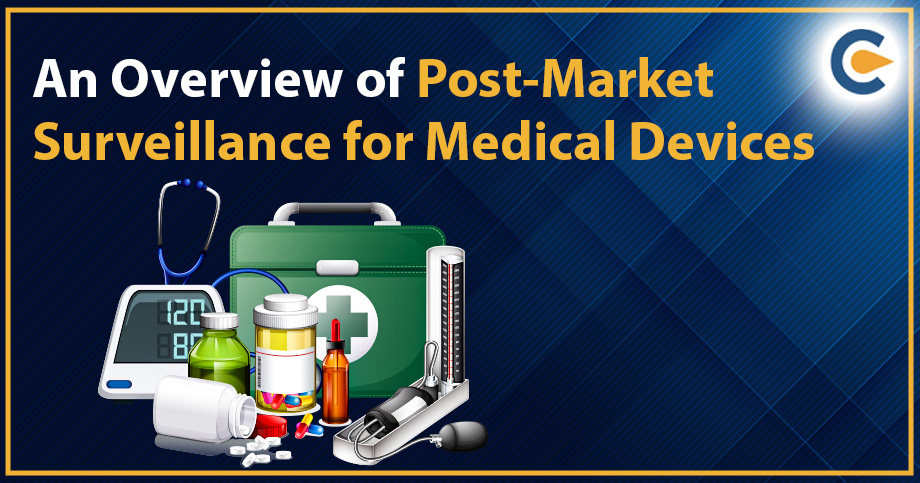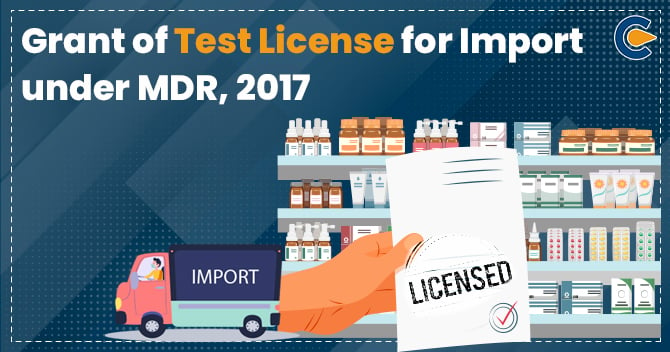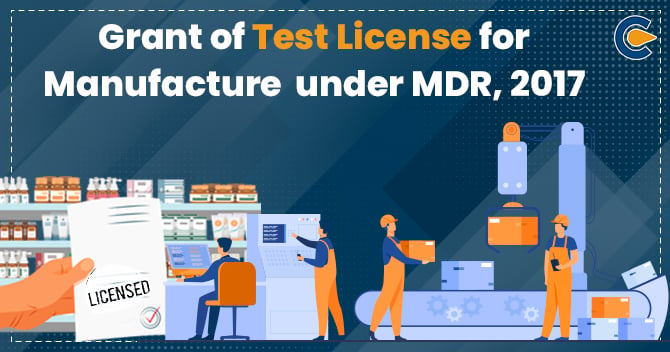Post-market surveillance is monitoring the safety and efficacy of a medical product after it has been released into the market to the general public. Post-Market Surveillance for Medical Devices is concerned with complying with regulations and making the appropriate reports with local authorities. This is more important than quality assurance.
Overview of Post-Market Surveillance
Post-Market Surveillance[1] for Medical Devices refers to a set of activities that manufacturers carry out to collect and assess the experience gained from using medical devices that have been released onto the market and determine whether or not any action is required. Post-market surveillance is an essential tool for ensuring that medical devices continue to be both safe and effective and for ensuring that appropriate measures are taken if the potential risks associated with using a medical device outweigh the potential benefits of doing so. Analyzing the experiences gained during post-market surveillance might bring to fair chances to enhance the performance of the medical device.
The significance of post-market surveillance is emphasised further in current horizontal ISO standards for medical devices. These standards were developed by the International Organization for Standardization (ISO).
A post-market monitoring system must comply with the ISO standard for quality management systems (QMS) for medical devices. The majority of manufacturers utilises this standard. In addition, the post-market surveillance criteria in the revised ISO standard for risk management of medical devices released in 2019 were made more stringent. It was just lately that the specific ISO guidance paper on Post-Market Surveillance for Medical Devices was made available to the public. When taken together, these documents provide a framework for carrying out post-market surveillance and using post-market surveillance data to ensure that the quality, safety, and performance of medical devices are maintained over time.
What Is Market Surveillance?
The activities that are carried out and the measures that are taken by competent authorities (regulatory authorities) to check and ensure that devices comply with the requirements outlined in the applicable legislation and do not pose a threat to public health, safety, or any other aspect of the protection of the public interest.
Basic Principles of Post-Market Surveillance
Post-Market Surveillance for Medical Devices manufacturers
Before releasing their products onto the market, makers of medical devices do what is known as a “pre-market review” to assess their products’ quality, safety, and effectiveness. Based on the principles of risk management, decisions about reducing risks and accepting residual risks are taken. However, problems could occur after the medical gadget has been distributed to customers in the market.
Manufacturers’ responsibilities in Post-Market Surveillance for Medical Devices
Even though medical devices are designed, developed, manufactured, and distributed on the global market after exhaustive pre-market examination, residual hazards about safety and performance will exist throughout the product’s lifetime. This is because of a confluence of factors, including inherent product variability, factors affecting the usage of the medical device, environment, varied user interactions, and unanticipated medical device failure or misuse. Before a medical device is released onto the market, the activities about its design and development must guarantee that any residual risks are proportionately reasonable in light of the anticipated benefits. To fulfil the requirements for the monitoring of products and processes and to make sure that the residual chances are still acceptable about the benefits, it is essential to continue to collect and assess information on the medical device both during and after manufacturing.
The early diagnosis of unintended impacts is made possible using appropriate techniques. These methods may also highlight areas in which improvements could be made. Post-Market Surveillance for Medical Devices allows manufacturers to execute monitoring by compiling and analysing experiences gleaned from the actual application of medical products. Based on the findings of this analysis, the necessity of taking additional actions is determined. These actions may include providing feedback into the risk management process; reporting incidents to NRAs; making a correction and FSCA; and communicating these findings to users via an FSN.
Post-Market Surveillance Linked To Risk Management
Managing the risks associated with medical devices is known as risk management, and it occurs at every stage of a medical device’s life cycle. Every maker of medical equipment ought to put in place some risk management procedure. The international standard ISO 14971 for risk management for medical devices is generally acknowledged to be the most advanced method available today. The process of risk management should be ongoing and iterative. During this process, the dangers linked with the medical device should be determined. Estimates and evaluations of the associated risks are performed, the stakes in question are controlled, and the effectiveness of the measures is monitored. Post-Market Surveillance for Medical Devices participation significantly impacts the process. It provides the fundamental link via which information about production and post-production is gathered and analysed so that it may be fed back into the risk management process when required.
Stakeholders’ Roles and Responsibilities
Every producer should adopt Post-Market Surveillance for Medical Devices, at the very least in its most basic form, as a system to monitor, gather, assess, and react to feedback. Other economic operators, such as importers, distributors, and authorised representatives play an essential supporting role to ensure that user feedback reaches the manufacturer, including overcoming language barriers. This role includes ensuring that the input is communicated in the appropriate format. Because simply reacting to feedback will only provide limited information on the experiences with medical devices in actual use, the maker may be required by national or regional regulations to do more sophisticated post-market surveillance. This is because simply reacting to input. As a result, it results in the underutilised knowledge that could have been used to enhance safety, quality, and performance. NRAs ought to make users, clients, and patients aware of the significance of submitting feedback to makers and their economic operators for post-market surveillance. A medical device’s users, as well as its clients or patients, will benefit if it continues to be safe and effective during its entire lifespan. Users, clients, and patients, in addition to implementers and purchasers, should be able to provide feedback to producers and the economic operators who benefit from their products.
Basics of Post-Market Surveillance for Medical Devices
It is required that the manufacturer (and their economic operators, as appropriate) have a post-market surveillance plan in place, which at the very least includes the steps that are listed here:
- The manufacturer must specify which specific medical device, medical device type, or medical device family the post-market surveillance plan applies to to comply with the plan’s scope.
- The manufacturer must specify the goals of the post-market surveillance plan for the device in question as part of the post-market surveillance plan.
- Indicating Responsibilities for Each Stage of the Post-Market Surveillance Process The manufacturer must indicate responsibilities for each stage of the post-market surveillance process.
- Information gathering: the procedure for information gathering needs to be described.
Responsibilities of Manufacturers in Post-Market Surveillance for Medical Devices
The manufacturer is the one who is obligated to define the responsibilities and capabilities associated with post-market surveillance activities. It is the responsibility of the manufacturer to ensure that sufficient resources are available for post-market surveillance activities. Post-Market Surveillance for Medical Devices should ideally include the participation of a group with the required level of autonomy and expertise, and who can cover all of the needed areas of expertise.
- Analysis of the data: the procedure for analysing the data needs to be described.
- Utilizing data analysis in risk management and other processes: there needs to be a system in place to ensure that the data obtained from post-market surveillance is incorporated into other functions, such as risk management, improvement, and clinical evaluation.
- Contemplate, decide, and carry out necessary actions: based on the data analyses and additional analysis carried out in the appropriate processes, primarily risk management, required steps have to be contemplated, and the action that is deemed to be the most relevant has to be decided and carried out, if needed.
Because each plan will cover only one medical device, one type, or family of medical devices, the manufacturer’s portfolio may require a certain minimum number of projects.
Conclusion
Post-Market Surveillance for Medical Devices is contingent upon the information that can be collected or that will be collected. The manufacturer is the one who is initially responsible for determining what the goals of the post-market surveillance activities are going to be for each medical device or medical device group. Next, the manufacturer is tasked with determining which sources are essential to accomplish these goals. Based on this, the data are going to be gathered and analysed. Reactive post-market surveillance is the most basic and fundamental form of post-market surveillance, and it is always required to be performed. The collection and analysis of feedback are the two main components of reactive post-market surveillance. Every feedback received is analysed to determine how severe the incident was and whether or not it needs to be reported to the NRA. It is possible to initiate an investigation into the primary cause, and subsequent actions, such as correction or corrective action, could be taken.
Read Our Article: A Step by Step guide for Registration Process for Medical Devices in India













